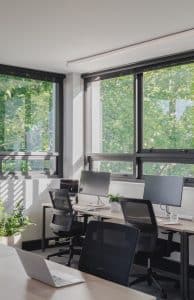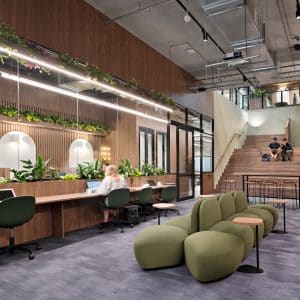Latest News
Architectural Lighting: Unleashing the Power of Light

Architecture is not just about the structure; it’s also about the atmosphere it creates. Lighting plays a crucial role in enhancing the architectural design and creating a sense of drama. Whether it’s natural light streaming through large windows or strategically placed artificial lighting, the interplay of light and shadow can transform a building into a captivating masterpiece.
Enhancing the Aesthetics
Architectural lighting has the ability to enhance the visual appeal of a building. Through carefully placed light fixtures, designers can draw attention to unique architectural elements, such as intricate facades, sculptural forms, or ornate details. By strategically illuminating these features, the true beauty and craftsmanship of the structure are emphasised, creating a visually stunning impact.

Setting the Mood
Lighting can significantly influence the ambiance of a space. By playing with light intensity, colour, and direction, designers can create various moods and atmospheres. For instance, warm and dim lighting can evoke a cozy and intimate ambiance in a restaurant, while bright and dynamic lighting can energise and invigorate a retail environment. The ability to control lighting allows architects to curate experiences and shape the emotional response of those who inhabit the space.

Emphasising Architectural Features
Architectural lighting enables designers to emphasize specific features and elements within a building. By using techniques like spotlighting, wall washing, or grazing, they can bring attention to structural details, focal points, or textures. Lighting can also be used to guide the viewer’s gaze and highlight the flow of spaces, creating a sense of movement and rhythm within the architecture.

Accent Lighting
Accent lighting involves placing focused light fixtures to highlight specific areas or objects. By directing light onto architectural details, artwork, or sculptures, architects can create dramatic focal points and draw the viewer’s attention to elements of interest. This technique adds depth and visual interest to the overall composition of the space.
Wall Washing
Wall washing is a technique where light is evenly distributed over a wall surface. It helps to create a smooth and uniform appearance while enhancing the texture and three-dimensional quality of the architecture. Wall washing is often used to highlight textured surfaces, decorative finishes, or unique material selections.

Grazing
Grazing involves placing light fixtures close to a surface, typically walls, to create a grazing effect that accentuates the textures and relief of the material. This technique is commonly used to emphasise stone, brickwork, or other textured surfaces, adding depth and drama to the architecture.
Silhouetting
Silhouetting is a technique that involves backlighting or uplighting an object or architectural element, creating a striking contrast between the object and its background. By concealing the details and revealing only the silhouette, architects can create a sense of mystery and intrigue, adding an element of drama to the space.

The Role of Colour Temperature
The colour temperature of light significantly impacts the mood and ambiance of a space. By understanding the psychological effects of warm and cool lighting, architects can create desired atmospheres.

Warm vs. Cool Lighting
Warm lighting, with its yellow and orange hues, is often associated with comfort, intimacy, and relaxation. It can evoke a cozy and inviting ambiance in spaces such as residential interiors, restaurants, or hotel lobbies. On the other hand, cool lighting, with its blue and white tones, is known for its energizing and refreshing qualities. It is commonly used in spaces that require focus and concentration, such as offices, retail stores, or educational institutions.


Light and Shadow: Creating Depth and Contrast
The interplay between light and shadow is a fundamental aspect of architectural drama. Shadows can create depth, enhance textures, and define spatial relationships within a building. Architects carefully manipulate the placement and intensity of light sources to cast intriguing shadows that captivate the observer. The contrast between light and shadow adds visual interest and evokes a sense of mystery and intrigue.
Lighting is a powerful tool that can transform architecture, adding drama, depth, and emotion to the built environment. The careful integration of lighting enhances the aesthetics, sets the mood, and highlights the architectural features. By considering factors such as colour temperature, light, and shadow, interactivity, and sustainability, architects can create captivating spaces that leave a lasting impression.
Want to find out more about how we can help you with your commercial lighting solutions? Get a personalised solution today, contact us for more information.
We're a Casambi certified commissioning partner